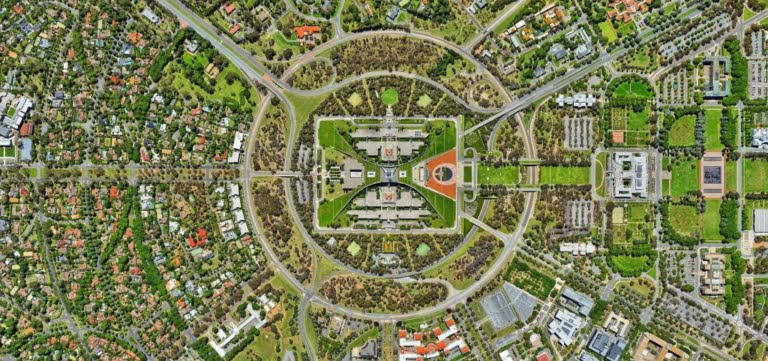Introduction
Urban Planning plays a crucial role in determining the layout, design, and development of cities, ensuring they thrive while meeting the needs of their residents. This comprehensive article delves into the realm of Urban Planning, covering its core principles, sustainable approaches, and the impact it has on the urban landscape and our daily lives. So, let’s embark on a journey to understand how Urban Planning shapes the future of our cities!
What is Urban Planning?
Urban Planning is the process of designing, regulating, and developing the land use of an urban area to create functional, efficient, and sustainable communities. It involves analyzing the current state of cities, envisioning future developments, and formulating strategies to achieve these goals.
The Importance of Urban Planning
Urban Planning plays a pivotal role in fostering the growth and prosperity of cities. Some key reasons why it is essential include:
- Efficient Land Use: Urban Planning ensures that land is used optimally, minimizing sprawl and preserving natural resources.
- Infrastructure Development: It facilitates the creation of robust infrastructure, including transportation, utilities, and public services.
- Community Livability: Well-planned cities offer a high quality of life with accessible amenities, green spaces, and recreational areas.
- Sustainable Growth: By considering environmental, social, and economic aspects, Urban Planning promotes sustainable development.
- Disaster Resilience: Proper planning can enhance a city’s resilience to natural disasters and other emergencies.
Key Principles of Urban Planning
Urban Planning is guided by several fundamental principles that steer the decision-making process. Some crucial principles include:
1. Mixed Land Use
Combining different land uses, such as residential, commercial, and recreational, within proximity, promotes walkability and reduces the need for long commutes, enhancing overall urban connectivity.
2. Smart Growth
Smart Growth emphasizes compact and well-connected developments, discouraging urban sprawl and preserving open spaces.
3. Transit-Oriented Development (TOD)
TOD focuses on designing urban areas around public transportation hubs, encouraging the use of eco-friendly commuting options.
4. Preservation of Cultural Heritage
Integrating historical and cultural landmarks into urban planning preserves a city’s identity and heritage.
5. Environmental Sustainability
Sustainable practices, like green building designs and renewable energy integration, are paramount to minimize the environmental impact of urban development.
Sustainable Urban Planning
Urban Planning is gaining momentum as cities strive to create environmentally friendly and socially inclusive communities. Some notable approaches to sustainable urban planning include:
1. Green Building Initiatives
Encouraging energy-efficient and environmentally responsible building practices can significantly reduce a city’s carbon footprint.
2. Urban Green Spaces
Creating parks, green corridors, and rooftop gardens not only enhances aesthetics but also promotes a healthier urban environment.
3. Bike-Friendly Infrastructure
Developing bike lanes and promoting cycling as an alternative mode of transportation reduces congestion and pollution.
4. Renewable Energy Integration
Incorporating renewable energy sources like solar and wind power can contribute to sustainable energy solutions for cities.
5. Waste Management Systems
Effective waste management systems, including recycling programs, are crucial in minimizing the environmental impact of urban living.
The Impact of Urban Planning on Our Lives
Urban Planning directly influences our daily lives, shaping our experiences within cities. Some ways in which it impacts us include:
1. Commuting and Transportation
Effective Urban Planning creates efficient transportation systems, reducing traffic congestion and improving commute times.
2. Access to Amenities
Well-planned cities offer easy access to essential amenities like schools, hospitals, and recreational facilities, enhancing the overall quality of life.
3. Community Engagement
Involving residents in the planning process fosters a sense of community ownership and empowerment.
4. Safety and Security
Properly planned cities often experience lower crime rates, contributing to safer neighborhoods.
5. Economic Opportunities
Urban Planning can attract businesses and investments, leading to job opportunities and economic growth.
Frequently Asked Questions (FAQs)
Q: What are the primary objectives of Urban Planning?
Urban Planning aims to create sustainable, functional, and aesthetically pleasing urban areas that meet the needs of their residents while preserving natural resources.
Q: How does Urban Planning promote environmental sustainability?
Urban Planning promotes sustainability through practices like green building initiatives, renewable energy integration, and the preservation of green spaces.
Q: Can Urban Planning mitigate the effects of climate change?
Yes, by implementing sustainable practices and considering climate resilience in city development, Urban Planning can contribute to mitigating climate change effects.
Q: What role does public engagement play in Urban Planning?
Public engagement allows residents to voice their opinions and concerns, ensuring that urban development aligns with the community’s needs and desires.
Q: How do cities benefit from Transit-Oriented Development (TOD)?
TOD encourages public transportation usage, reducing reliance on cars, minimizing traffic congestion, and promoting eco-friendly commuting.
Q: Is Urban Planning a continuous process?
Yes, Urban Planning is an ongoing process that adapts to the changing needs and dynamics of cities over time.
Conclusion
Urban Planning holds the key to creating thriving, sustainable, and inclusive cities for future generations. By incorporating innovative strategies, preserving natural resources, and considering the needs of residents, Urban Planning paves the way for vibrant urban landscapes that enhance the overall well-being of its inhabitants. As we move forward, it is essential to recognize the significance of Urban Planning and embrace practices that ensure our cities become havens of prosperity and harmony.







